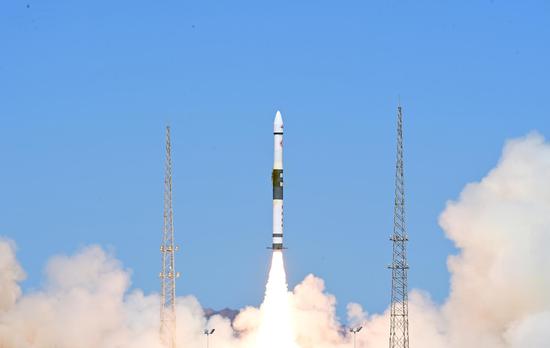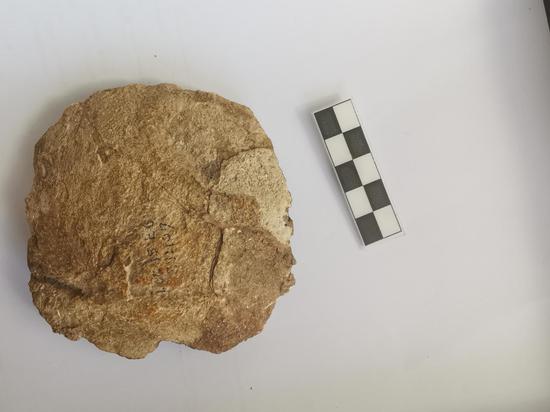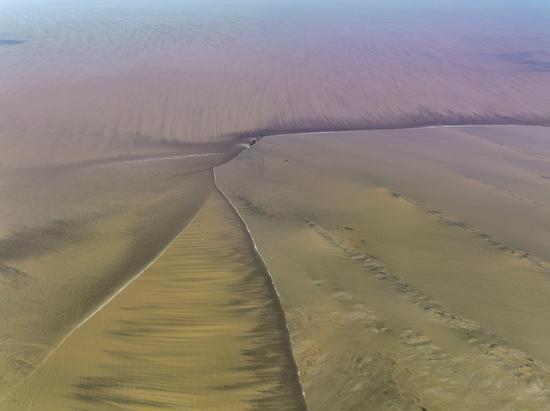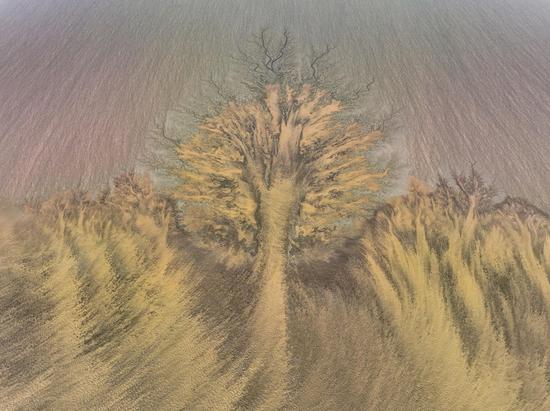People commonly think of dinosaurs as being overwhelmingly dominant during their time on Earth, but a recent study suggests that despite their usually much larger size, they may still have fallen prey to mammal predators.
The study, "An Extraordinary Fossil Captures the Struggle for Existence during the Mesozoic", was a collaborative effort by Chinese and Canadian paleontologists and was issued on Tuesday in the journal Scientific Reports.
By examining a 125-million-year-old Cretaceous Period fossil, scientists came to the conclusion that a badgerlike mammal was preying on a herbivorous dinosaur three times its body weight. But before their do-or-die battle ended, they were suddenly engulfed by volcanic debris, locking them eternally in their struggle.
The fossil was collected in Lujiatun in Beipiao city, Liaoning province, in May 2012 by Han Gang, a professor at the Hainan Vocational University of Science and Technology. It is well preserved and is now part of the collection at the Weihai Ziguang Shi Yan School Museum in Weihai, Shandong province. Scientists refer to the site where it was found in Lujiatun as the "Chinese Pompeii" because it has an abundance of ancient vertebrate fossils.
The fossil consists of entwined skeletons of a larger and smaller animal. Paleontologists said the larger one, about the size of a modern dog, was a Psittacosaurus, a plant-eating dinosaur. The smaller one, a Repenomamus robustus, was a mammal that resembled a present-day badger. Though it was one of the largest mammals at the time, it still weighed just a third of the Psittacosaurus' weight.
Previously, scientists determined that the badgerlike mammal was a carnivore, but they couldn't decide whether it hunted other live animals or just scavenged carcasses.
By studying the posture of the skeletons and the body mass distribution, they came to the conclusion that the mammal was the aggressor.
"The Repenomamus robustus was atop the Psittacosaurus' back, grasping its jaw and biting its ribs, and its hind foot was wrapped tightly around the lower hind limb of the dinosaur," Wu Xiaochun, a paleontologist at the Canadian Museum of Nature who participated in the study, told Science and Technology Daily.
Wu and a co-author at the museum, Jordan Mallon, as well as Han Gang, who collected the fossil, agreed that if the mammal had been feeding on an animal carcass, there would be plenty of bite marks. The lack of such marks and the animals' posture suggest that the mammal was the aggressor.
"The new fossil thus challenges the common assumption that Mesozoic mammals were merely fodder for the ruling dinosaurs," the scientists said in the paper.


















































 京公网安备 11010202009201号
京公网安备 11010202009201号